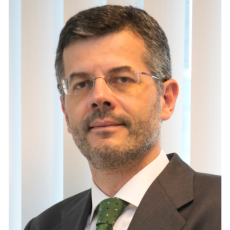Having been CEO of the company for about a decade, can you describe how Atlantica Sustainable Infrastructure started and what its commitments to sustainability are today?
Our renewable energy company went public in the United States in 2014 and started with a significant amount of assets. Today, we provide support for the new energy transition by investing in, owning, and operating two types of assets: renewable energy including solar, wind, hydro, and geothermal energy and other similar technologies, such as transmission lines, energy storage systems, and efficient natural gas plants, that are crucial for the green transition. The company name, Atlantica, captures the diverse markets we serve, which include those in North American countries like Canada and the United States; Latin American countries like Mexico, Colombia, Peru, and Chile; and European countries like Spain.
In your portfolio you refer to “efficient natural gas” as a key element in building a future green economy. Could you elaborate on what makes a natural gas “efficient” and what the former’s role is in the green transition?
Our objective is to achieve a purely green-generated society, and our current challenge is to find dispatchable and economically competitive sources of green energy. In the future, we are going to see the development of renewable energy in the form of biogas, biomass, geothermal power, and storage systems along with the concomitant replacement of gas as the primary source of energy in different markets. Yet today, until renewable and storage development increases, we need to complement renewables with natural gas and thermal energy, requiring during the transition technologies that emit carbon dioxide.
It is known that production costs of renewable energy are often lower than those of other energy sources. Yet, it is the associated costs of infrastructure and storage that make renewables expensive. How should we handle this challenge?
Solutions promoting better transmission networks that can help to manage intermittency are going to be a key area of investment. We also need to further develop the dispatchable renewable energy sources I mentioned before to supplement intermittency. Lastly, a green transition is going to require building short- and long-term energy storage systems in the form of lithium-ion batteries, water and other technologies. It is precisely these three pillars of the green transition that require an infrastructure, which will take a significant amount of time and investment to develop.
How long will it take for energy storage systems to become reliable?
Storage technologies are already reliable enough today: the United States alone deployed gigawatts of storage in 2022. I would reframe the question and instead ask: How long will it take to reduce the associated costs of storing renewable energy to the point that it can compete with natural gas? At the same time, the relevant question is: What economic incentives or costs will governments place on carbon dioxide to accelerate that process? I will note that the transition is inexorable and will happen with or without government support, especially since energy storage systems are already available to us. That said, one simple regulation that would propel the transition would be to put a tax or elevated cost on CO2-emitting technologies.
How have recent supply chain disturbances affected this transition?
Especially after the COVID-19 pandemic, we have had supply chain disruptions in the production of BP solar modules and lithium-ion batteries, which is normal given the rapid growth and increasing capacity of our sector. So, yes, throughout the process of this transition, there will be fluctuations in the price of supply. But the tendency toward green generation, as well as the availability of technologies that support it, is nonetheless clear.
What projects do you have in store in terms of expanding your portfolio? And what message would you convey to our readers?
As I have indicated before, we believe that a green transition requires having a diversified mix of technologies, which is why we are working on projects ranging from the development of traditional photovoltaic plants to more innovative hydrogen-powered technologies that both generate green energy and lend themselves to industrial uses.
I would remind people that the green transition is no longer an initiative that needs to be put into effect, it is a reality. And, today, this implies moving beyond solar and wind energy and remaining ambitious about achieving completely green generation of electricity but also heat, and energy for industrial applications within the next twenty years.





